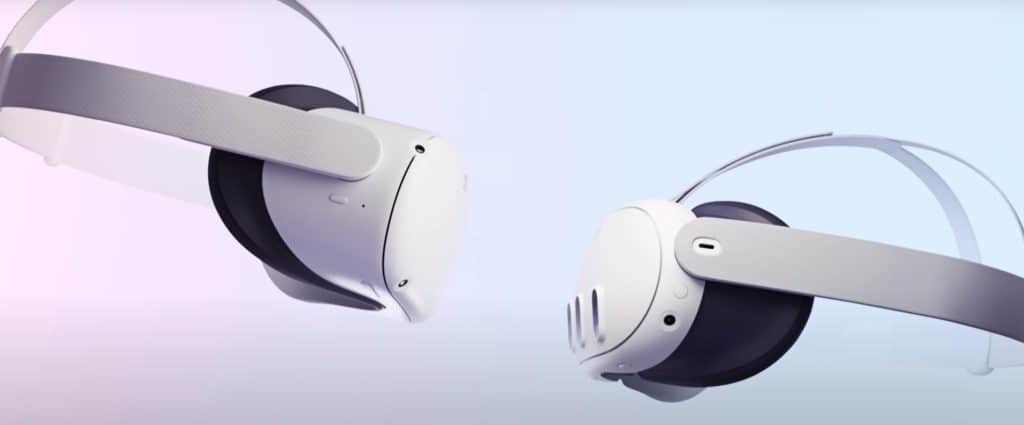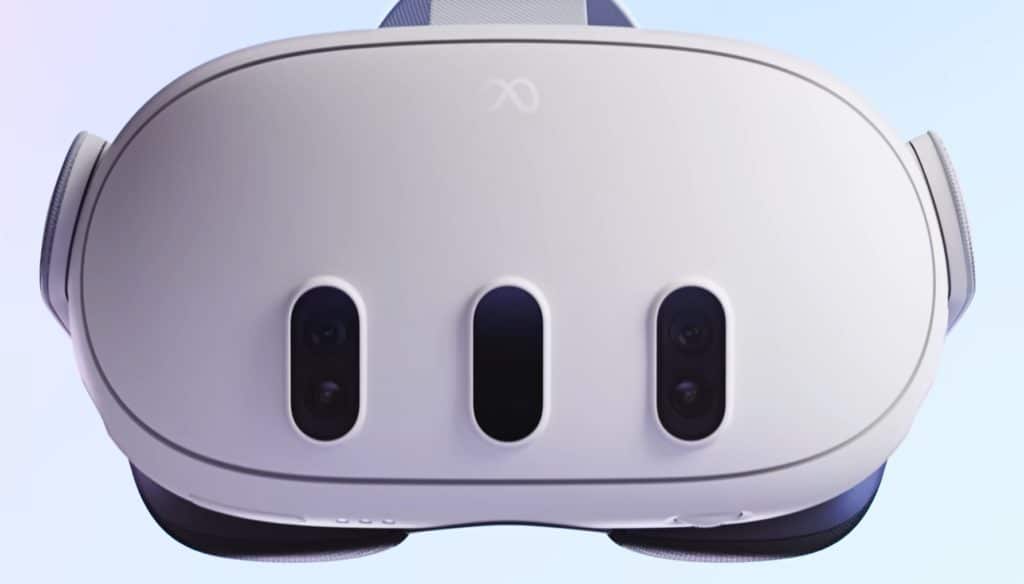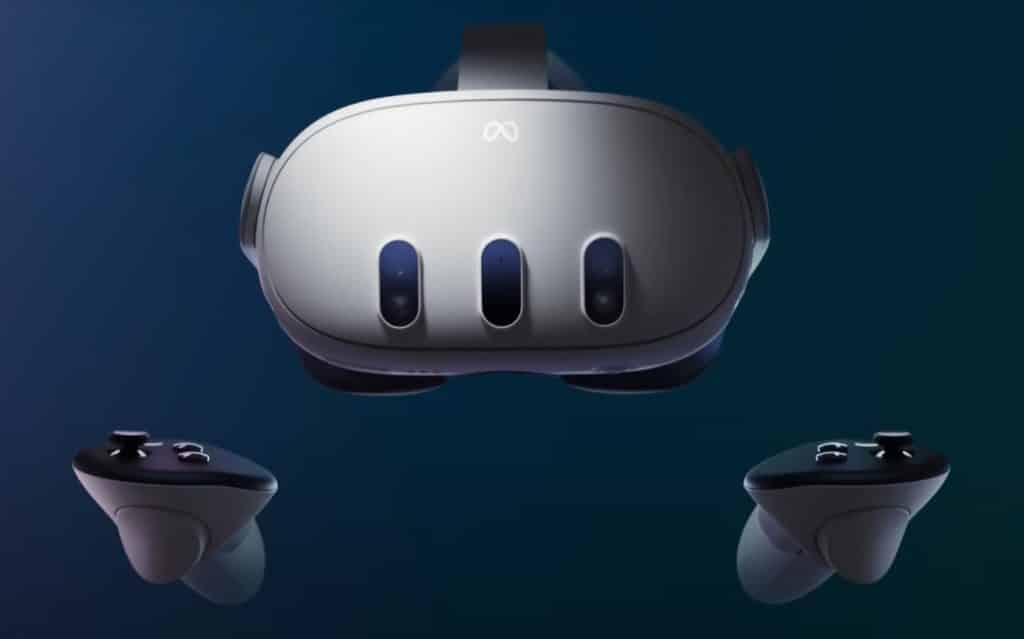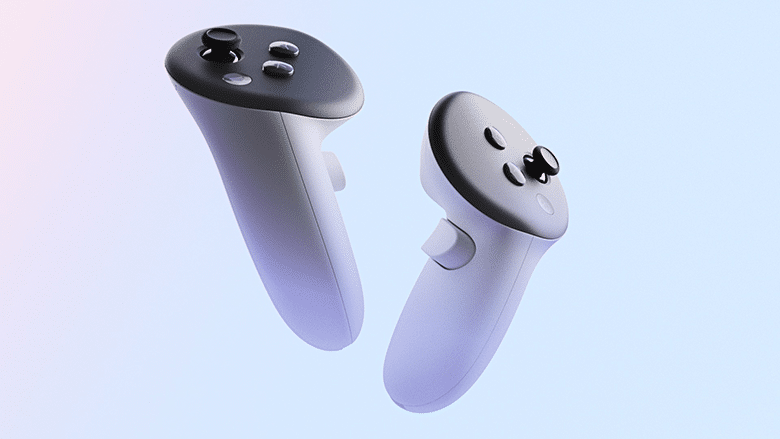Is the Meta Quest 3 worth an upgrade from the original Oculus Quest? What about the Meta Quest 2? In this guide, we highlight several key Meta Quest 3 features that justify an upgrade to your VR headset.
The Quest 3 includes improvements to:
- the core processor
- display
- size and form factory
- passthrough
- controllers
and more!
Below, we’ll delve into these features, exploring how they make the Quest 3 a superior VR experience.
Is the Meta Quest 3 Better Than the Quest 2?
Yes, the Meta Quest 3 makes several improvements over the Quest 2, which we will go into detail on below. Nearly everything has been iterated and improved, including the display, size, processor, controllers, and comfort.
The only drawback on the Quest 3 is that it is $100 more than the Quest 2 – $500 to purchase. The Meta Quest 2 has dropped in price by $100 down to $300 as a result.

What Meta Quest 3 Features Make it Better Than the Quest 2?
These are the top enhancements in the new Quest 3 VR headset:
- New Qualcomm Snapdragon Chip
- Pancake Lenses
- Mixed Reality Features
- HD Color Passthrough
- Improved Display Resolution
- Lighter Design
- Redesigned Touch Plus Controllers
- Machine Learning and Spatial Understanding
- More Storage Options
Next, we will go into detail on each feature and explain why it is an improvement!
Next-Generation Snapdragon Chipset
One of the key improvements in the Meta Quest 3 is the inclusion of a next-generation Snapdragon chipset. Unnamed so far, we expect this to be called the XR3.
This new chipset, developed in collaboration with Qualcomm Technologies, delivers more than twice the graphical performance of the previous generation Snapdragon GPU in the Quest 2.
This means that the Quest 3 can render more detailed and realistic virtual environments, enhancing the overall VR experience.

New Pancake Lenses
One of the biggest improvements on the Quest 3 is the inclusion of the same pancake lenses that the Meta Quest Pro has. Pancake optics are much thinner than traditional fresnel lenses, allowing the Quest 3 to be slimmer and lighter.
The term “pancake” refers to the lens’s thin, flat design, which is significantly different from the thicker, more curved lenses used in many traditional VR headsets. The basic principle behind pancake lenses is the use of a series of mirrors to fold the optical path, which allows the lens to be much thinner while still providing a wide field of view.
Light from the display enters the lens, bounces off the mirrors inside, and then exits the lens to reach the user’s eye. This bouncing of light effectively increases the length of the optical path, which helps to create a wide field of view in a compact form factor.
Pancake lenses have previously only been available on the Quest Pro and HTC Vive XR Elite, both over $1,000. Including them on the $500 Quest 3 is a huge move for Meta.

Mixed Reality Technology
Another major improvement in the Quest 3 is the introduction of Meta Reality technology. This groundbreaking technology allows the headset to intelligently understand and respond to objects in the physical space, blending the physical world with the virtual one.
This creates a more immersive and interactive VR experience, taking the Quest 3 a step beyond the capabilities of the Quest 2. Some of the ways Meta is using mixed reality to improve the headset are:
- Automatic detection of playspace
- Better wall and object detection
- Improved hand tracking
- Spatial and depth recognition
This is a significant upgrade over the Quest 2, which does not feature this advanced mixed reality technology.


High-Fidelity Color Passthrough
The Quest 3 also features high-fidelity color Passthrough, a major improvement over the monochrome passthrough in the Quest 2. This feature allows users to see the real world around them in full color through the headset, creating a more immersive and realistic mixed reality experience.
High-fidelity color Passthrough is made possible by the Quest 3’s dual 4MP RGB color cameras and a depth sensor, which provide a more accurate representation of the user’s play space. The Quest 3 has 10x more pixels in passthrough compared to the Quest 2, resulting in a clearer and more detailed view of the real world.
Improved Resolution and Performance
The Meta Quest 3 takes a significant leap forward in terms of resolution and performance compared to the Quest 2. While the exact resolution of the Quest 3 has not been specified, it’s known to be higher than that of the Quest 2. This highest resolution display, combined with the next-generation Snapdragon chipset, allows the Quest 3 to deliver more detailed and realistic virtual environments.
In terms of performance, the Quest 3 is a powerhouse. With more than twice the graphical performance of the Quest 2, the Quest 3 can handle more demanding VR games and experiences.

Lighter and More Comfortable Design
Comfort is a crucial factor in VR headsets, and the Quest 3 has made significant strides in this area. The Quest 3 is 40% lighter than the Quest 2, giving it a more comfortable form factor to wear for extended periods.
The headset also features a more flexible material for the head strap, providing a better fit and improved comfort.
Most of the reason for the reduction is because of the new pancake lenses. This has allowed Meta to include similar sensors, battery, and other features in the reduced size.

Redesigned Touch Plus Controllers
The controllers are your primary means of interaction in VR, and the Quest 3 has made significant improvements in this area.
The Quest 3 features redesigned Touch Plus controllers, which have a more streamlined and ergonomic form factor compared to the Quest 2’s controllers. The outer tracking rings around the controllers is gone.
The Touch Plus controllers also feature TruTouch haptics, providing more realistic and immersive feedback. And with hand tracking supported out of the box, the Quest 3 offers more intuitive and natural interactions in the virtual world.

Advanced Machine Learning and Spatial Understanding
The Quest 3 takes mixed reality to the next level with its advanced machine learning and spatial understanding capabilities. These technologies allow the headset to intelligently understand and respond to objects and environments in the physical world, creating a more immersive and interactive mixed reality experience.
Machine learning allows the Quest 3 to learn from the user’s interactions and behaviors, improving the mixed reality experience over time. Spatial understanding, on the other hand, enables the Quest 3 to accurately map the user’s physical environment, recognizing objects and surfaces in the real world.
These features represent a significant upgrade over the Quest 2, making the Quest 3 a more advanced and capable VR headset. These features are key long-term, as Meta compiles information needed for future mixed reality products.
Greater Storage Options
One of the significant upgrades in the Meta Quest 3 over the Quest 2 is the increased storage options. This is key as virtual reality games become larger in size and more detailed.
The Quest 3 comes with a base storage option of 128GB, with an additional storage option available for those who want more space. We expect to see a 512 GB model of the headset, which would be the largest Meta VR headset yet.
The Quest 2, offers only 128GB and 256GB models.
Having more storage space is crucial in VR, as it allows you to download and store more games, apps, and experiences. With the increased storage options, the Quest 3 provides greater flexibility and convenience for users, allowing them to make the most of their VR experience.
Conclusion
The Meta Quest 3 is a remarkable device that offers significant improvements over the Quest 2. My favorite new features are the next-generation Snapdragon chipset, high-fidelity color passthrough, and lighter pancake optic lenses. The Quest 3 is a superior VR experience.
The Quest 3’s backwards compatibility with the Quest 2 catalog also ensures that users have a wide range of games, apps, and experiences to explore, making it a versatile and flexible VR device.
With its advanced features and affordable price point, the Quest 3 will continue to bring VR and the Quest platform to the mainstream. Stay tuned for more updates on the Meta Quest 3!


